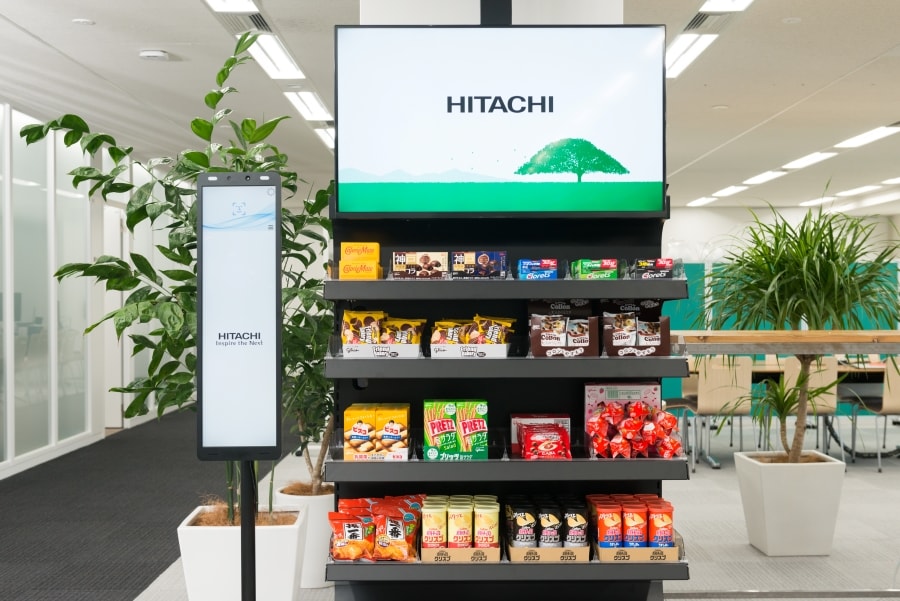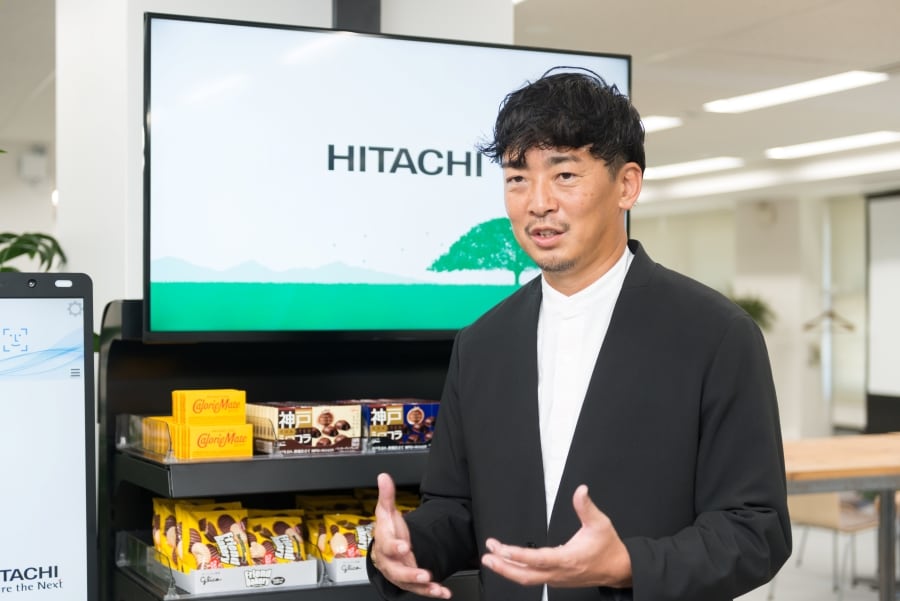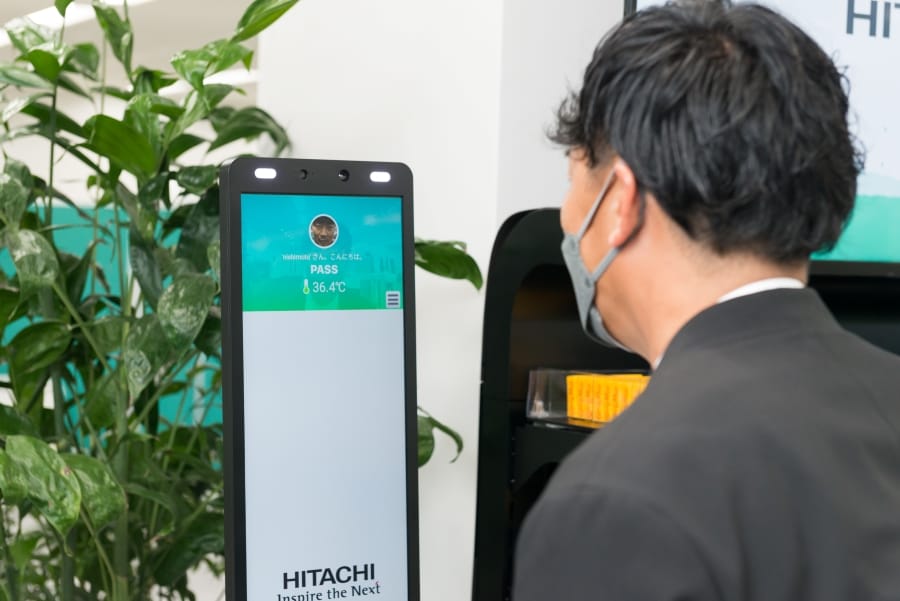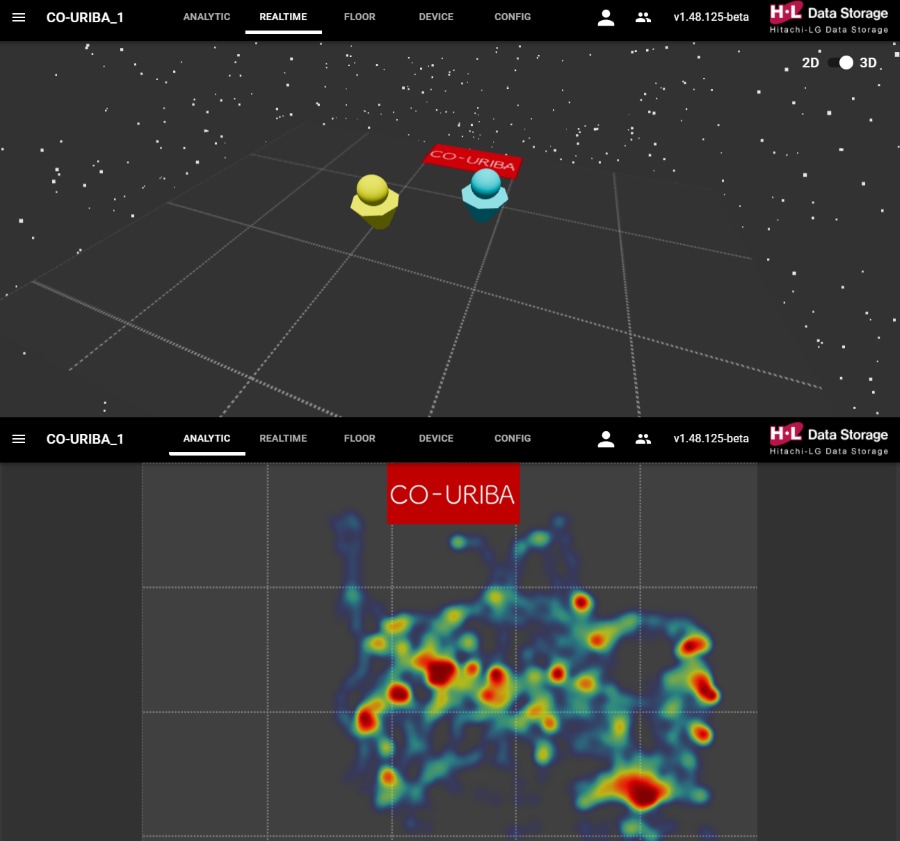
Proof-of-concept testing begins for the small, unmanned store service. (Photo: Daisuke Saito)
On February 22, Hitachi, Ltd. announced that it would start proof-of-concept testing of “CO-URIBA”, a small, unmanned store service that supports digital transformation (DX) in the retail industry. The testing will be conducted at Hitachi's offices in cooperation with Glico Channel Create, Inc., which developed and operates the Office Glico confectionery stall sales service for offices. Hitachi is aiming to create a new shopping experience using the latest technology based on the results.

Tomoki Nishimoto, leader of the project (photo: Daisuke Saito)
The retail industry is facing a serious issue: labor shortages. Tomoki Nishimoto, who works at Hitachi, Ltd. and who is the leader of this project, stated: “Both a reduction in labor and increased sales are essential for growth.”
Against this backdrop, a new style of unmanned store is garnering attention in which a staff-less stall can be deployed and effective marketing achieved, with purchase history, activity logs, and other big data.
Nishimoto continues: “Having said that, the cost of unmanned stores is generally in the range of tens of millions of yen. Other than major convenience store operators, small- to medium-sized retailers can’t afford such an initial investment.”
Thus, the concept of CO-URIBA, which takes advantage of small spaces to create a sales stall, was born. Compared to digitally transforming an entire store, the store owner can start with an initial investment of less than a tenth of that and can casually tackle DX and automation from one shelf to begin with.

Facial recognition is possible even while wearing a mask. (Photo: Daisuke Saito)
One of the merits that CO-URIBA offers is that the user does not need their wallet or credit card and can shop entirely hands-free.
The user first registers their biometric and credit card information with the service. Then, when the user uses the service for shopping, they authenticate their identity with facial recognition using the display installed at the store, take the products that they want from the shelf, and leave the store. The purchase cost will be automatically calculated.

A notification of the cost and data of the purchased goods is automatically sent to the user’s smartphone. (Photo: Daisuke Saito)
Biometric authentication leverages the proprietary Hitachi patent technology, known as "Public Biometric Infrastructure" (PBI). As biometrics information is registered in a way that cannot be recovered, the service can be used with peace of mind in terms of security.
However, in the development of the service, the team struggled with the accurate automatic recognition of what product and the amount the user had in their hands. Hitachi’s two-sensor technology solved this issue.
Nishimoto said again: “Installing highly accurate sensors on product shelves and overhead sensors enabled the system to accurately recognize even lightweight products like chewing gum. Furthermore, if a user returns a product to the shelf after they have picked it up, the system identifies the product as a canceled purchase.”

Thanks to the overhead 3D sensor, the user’s activity history can be obtained.
One of the features of CO-URIBA is the fact that the purchase activity logs of users that visit the unmanned store can be collected and used for marketing purposes.
The weight sensors on the product shelves and overhead 3D sensors can obtain not only user attributes and product purchases but also detailed activity history from various viewpoints, including “a user stood in front of products for a certain amount of time” and “a shopper picked up an item but put it back on the shelf”.
Nishimoto said: “By visualizing consumption activity based on this data, we expect that we can more effectively develop marketing campaigns and products, as well as formulate sales strategies.”
These sensors also contribute to the optimization of inventory control. What products are being sold when, how much inventory is left, and other information can be ascertained in real time, so re-stocking can be performed more smoothly. An increase in sales can also be expected if popular products are given more space on the shelves at the right time.

The authentication device also has a survey feature. (Photo: Daisuke Saito)
The authentication device at the front of the store and the digital signage above the product shelves can also display various video content in a timely manner. Nishimoto reckons that the survey feature will be especially effective.
“A survey feature that asks users what products they would like to be stocked is built into the authentication device. Stocking the shelves with products in accordance with the responses from the survey enables the store owner to sell products that the user actually wants. We want to make the stalls fun places that not only have the convenience of an unmanned store but that also grow with users.”
The digital signage of CO-URIBA can also display personalized ads based on the authentication information when the user enters the store. Selling this space as advertising space has the potential to be a new revenue source.
Nishimoto expressed his hopes for the future as follows:
“Taking full advantage of small spaces will further accelerate the digital transformation of the retail industry, and we would also like to make a platform that store owners, users, and those that are involved with CO-URIBA find exciting. We want to use Hitachi technologies to help with that goal.”